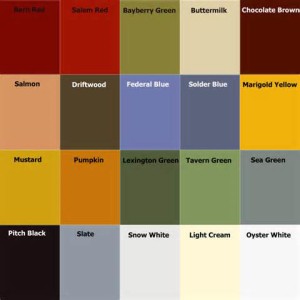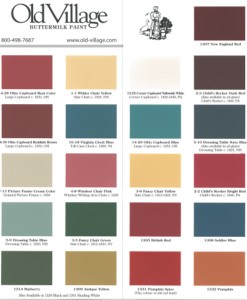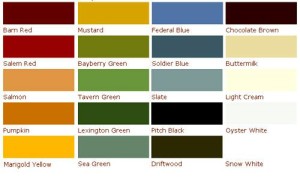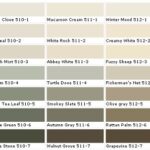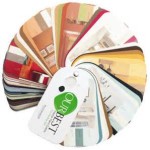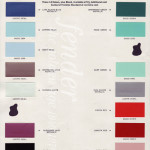Milk Paint Color Chart
Milk paint is derived from milk casein and is also known as casein paint. It is a water-soluble medium, fast-drying, and the oldest-known form of paint used in cave paintings and drawings dating back 20,000 years. They were created with a simple mixture of lime, earth pigments, and also milk.
Milk paint, in the United States, is associated with antique furniture, but in recent years because of its organic environmentally friendly properties, it has enjoyed a renewal of interest in the technique.
Types of Milk Paint
Premixed milk paints are offered by a few companies, such as Anna Sova. This is used straight out of the can. The milk paints from Real Milk Paint and The Old Fashioned Milk Paint Co. come in powdered form and have to be mixed with water. The milk paint color chart is provided as a guide. However, if you are more adventurous, you are able to produce milk paint from scratch yourself.
Mixing Powdered Milk Paint
These products generally will adhere to almost all clean, porous surfaces and are required to be mixed with warm water in a 1 to 1 ratio, the instruction for mixing come with the product that is purchased.
A pancake-batter is the required consistency and takes about 20 minutes to thicken stirring often during that period. Alternately, the paint may also be mixed the night before, giving a smoother texture. However, it is recommended that it is used as soon as possible because the paint is organic.
An “anti-foam” product the company sells may be added if the mixture gets foamy on top, or strain the mixed paint through a paper mesh funnel, a piece of nylon stocking, or some cheesecloth.
Using Mixed Powdered Milk Paint on Porous Surfaces
Unless the surface has a visible joint compound like new plaster, no primer is necessary for porous surfaces. Take a damp rag to clean the surface and seal any knots in wood with shellac, the area is then ready for the first coat of milk paint. It isn’t necessary to wait for the shellac to dry.
Allow the first coat to dry for an hour, then rub down, lightly with a scotch pad, some plain steel wool, or some fine sandpaper. Apply a second coat of paint if needed, then apply a sealer over the top the painted surface if it is going to be exposed to water or dampness.
Using mixed Powdered Milk Paint on Non-Porous Surfaces
Using milk paint over primers or sealers with stain blockers is not recommended by some milk paint manufacturers. The surface must be prepared by washing down with a washing soda and scuff up shiny surfaces with sandpaper. However, you may need to remove any layers of old paint first by stripping and sanding because milk paint doesn’t always work well with surfaces that have been painted with multiple layers.
Other Tips
As this paint will spot in the rain, applying a coat of clear sealer over the top is recommended. Milk paint is best used as interior paint. Because of minor variations in natural earth materials, colors could be slightly different from batch to batch.
So it’s best to order as much paint as you think you will need for your project. Once you have chosen the desired color from the Milk Paint Color Chart. The various milk paint powders may also be mixed and matched to create your own colors.

